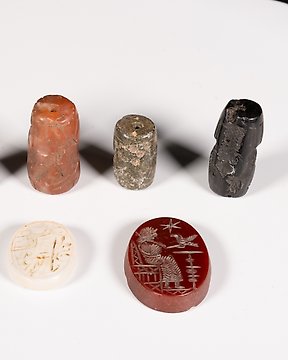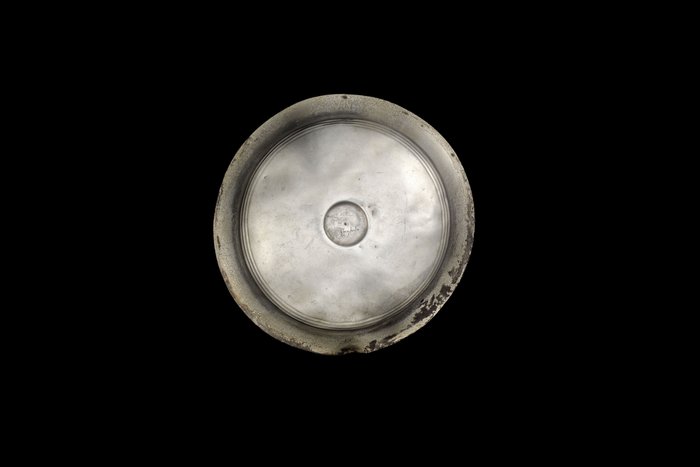
Bliski Wschód Kamienne pieczęcie cylindryczne i wklęsłość Uszczelki (6)
Nr 82574631

Nr 82574631

This phiale is made of silver and has a fluted decoration on the outside. On the outside of the omphalos is an inscription in Aramaic, written in very fine, stylised characters, executed with great care. The translation of this inscription reads: 'For the king of Tyre'.
This item can be read in two ways, either as a diplomatic gift to a monarch of Tyre in the Persian period, or as an offering to the 'king of Tyre', who is none other than Melqart, the chief deity of the city of Tyre, whose name means 'king of the city'.
The Achaemenid Empire subjugated Tyre and the other Phoenician kingdoms from the end of the 6th century BC, and in 539 BC the city of Tyre was conquered by the Achaemenid Empire under King Cyrus the Great, who kept it under his rule until 332 BC with the arrival of Alexander the Great. The Phoenician kings were allies rather than vassals of the Achaemenids, which allowed the Phoenician peoples to enjoy a wide measure of autonomy and Persian protection in exchange for supporting the Persians in campaigns such as the conquest of Greece and Egypt.
Several cities enjoyed the favour of the Persian kings, especially Sidon and Tyre. But after the Sidonian rebellion of 351-350 BC, Tyre became the guarantor of Persian rule throughout the Mediterranean strip of the Levant for some time, allowing it to extend its dominion southwards and control much of the present-day coast of Israel.
*Study carried out by Eduardo García Alfonso, Archaeologist in charge of the Department of Museums and Archaeological and Monumental Sites of the Department of Culture of the Andalusian Regional Government.
*Translation by José Ramón Ayaso, Professor of History of Israel and the Jewish People at the Department of Hebrew and Aramaic Studies at the University of Granada.
Provenance: UK private collection, formed in the 1970s-80s; Purchased at auction, London, Bonhams, 2014
The seller guarantees that he is entitled to ship this lot. The seller will take care that any necessary permits will be arranged. The seller will inform the buyer about this if this takes more than a few days.
According to Spanish legislation, items sent outside the European Union are subject to export taxes and will be added to the invoice, at the buyer's expense.
These export fees are fixed on the final auction price and the tax rate is not applied directly on the total value of the item to be exported, but rather the different percentages by sections are applied to it:
- Up to 6,000 euros: 5%.
- From 6.001 to 60.000 euros: 10%.
Due to Switzerland customs regulations about antiques over 100 years old, this lot cannot be sold to customers residing in Switzerland.
Jak kupować w serwisie Catawiki
1. Odkryj coś wyjątkowego
2. Złóż najwyższą ofertę
3. Dokonaj bezpiecznej płatności